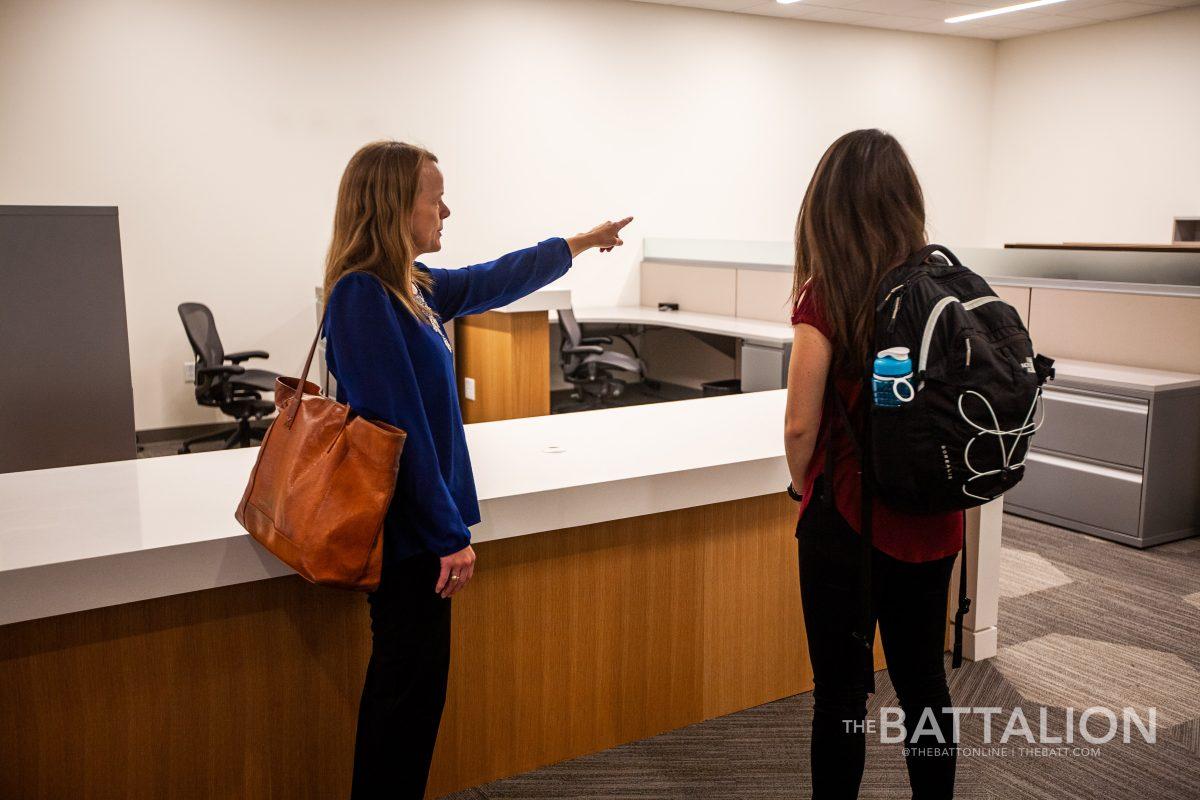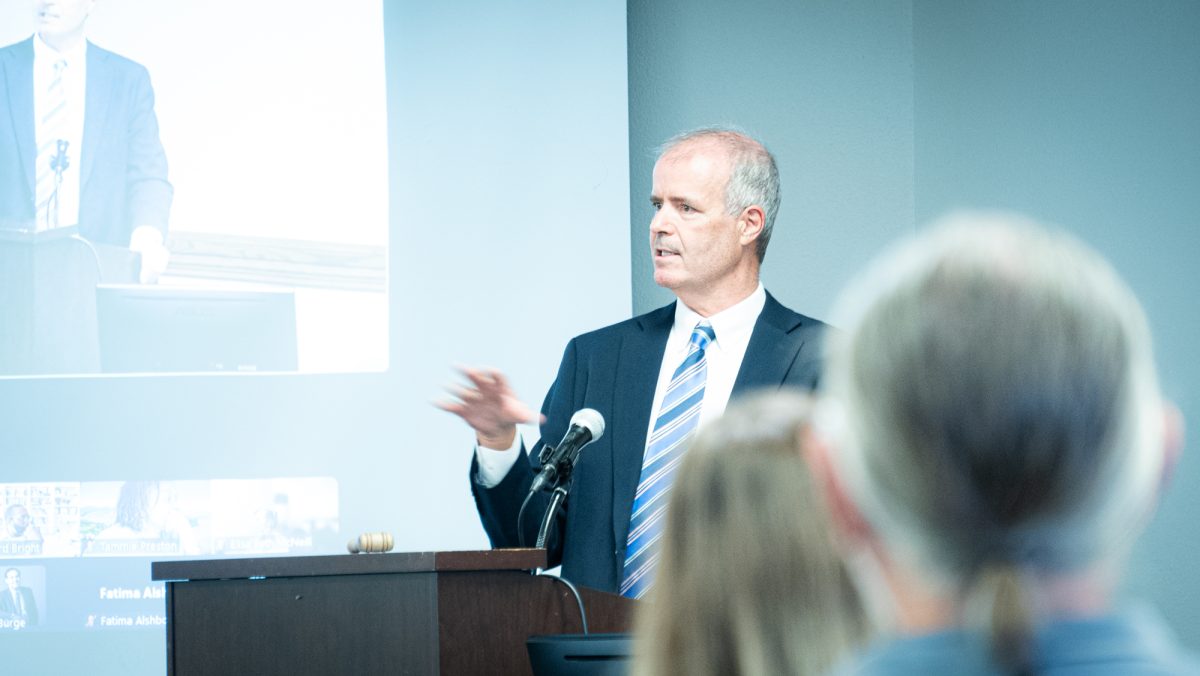The majority of students at Texas A&M University with disabilities have ones that cannot be seen, also known as invisible disabilities. Of the nearly 70,000 students who attend Texas A&M, 2,849 are enrolled with Disability Resources, according to Kristie Orr, director at Disability Resources. That’s 4.1% of students.
Disability Resources, a part of Texas A&M’s Division of Student Affairs, works with students who have disabilities. They are in charge of making sure students who are registered with them receive proper accommodations for their disability, whether the disability is apparent or not.
“We tell professors a lot that they should assume there is a student with a disability in their class,” Maria Ortega, assistant director at Disability Resources said.
Most of the students registered with Disability Resources have invisible disabilities. An invisible disability, according to the Invisible Disabilities Association, is one that is not immediately apparent. This can range from anything such as lupus or fibromyalgia, which cause chronic pain, to mental illnesses such as depression and anxiety.
Some students said they were unaware they were able to receive accommodations for their disability. Before learning he was eligible, Juan Reyes, who has anxiety and bipolar disorder, struggled in his classes. Now that he is registered with Disability Resources, Reyes receives extended testing time, a quiet place to test, a peer note-taker and is able to record lectures.
His accommodations level the playing field and allow him to get the information he needs from lecture, even if he is unable to focus in class due to his disability, Reyes said.
He thinks if students knew more about what qualified as having a disability, and the kind of help they can receive, they may be more likely to register with Disability Resources and seek out help.
Disability Resources is currently in the process of petitioning to change the disability statement required on all syllabi, Orr said. For the future, they are trying to list possible disabilities, such as ADHD, anxiety, depression and chronic illnesses on all syllabi in order to better inform students of their rights and responsibilities when it comes to seeking accommodations.
Although Disability Resources is attempting to inform students of their rights, the U.S. Department of Education says it is ultimately up to the student to inform their school of any academic adjustment they might need.
Of the accommodations students receive, the most common is being allowed to test in the testing center, Ortega said. The testing center provides a quiet place for students to take exams, and generally students are allowed more time on their exams.
For students who struggle with anxiety or learning disabilities, additional testing time and minimal distraction rooms can allow them to perform better than they would in a traditional exam setting.
“I have a hard time focusing on tests due to my anxiety,” Gillian Predmore said. Predmore lives with anxiety and chronic migraines. The additional testing time and minimal distraction room give her the opportunity to focus on her exam, she said.
Most professors are understanding of accommodations, but some aren’t as accommodating, Predmore said.
Disability Resources holds training and sessions for faculty to better understand disabilities, Orr said. The professors are becoming more understanding that a student’s disability may not be immediately evident.
When Disability Resources asks the faculty what the most common disability is that they may not be able to see, the faculty usually answers with ADHD, Orr said. This is the most common disability they provide accommodations for.
Drew Benson, a students with ADHD said that when he was having trouble with his course load closer to the middle of the school year, his professors weren’t as understanding of his accommodations. He believes they would have been more understanding if he had gone to them at the beginning of the school year.
A common problem Disability Resources has with students is them not going to their professors about their accommodations.
Professors want their students to succeed, and they know that accommodations help them to do that, Ortega said. “Professors want students to use their accommodations,”
The disclosure of a disability is always voluntary, according to the U.S Department of Education. While students are not required to disclose their disability to the university, it is encouraged if they wish to receive accommodations.
Additionally, students cannot be denied admission to a college due to having a disability. They also may not be asked to disclose whether or not they have a disability prior to admission, according to PACER, a nonprofit that seeks to help families who have children with disabilities.
Although students are not required to disclose their disability, they must provide proper documentation to Disability Resources of their disability in order to decide what accommodations are appropriate, according to the U.S. Department of Education.
One of the things to remember is that students with disabilities are just like other students, Ortega said. This means, although some students with disabilities keep up with their work, others don’t.
“Some are good students, some aren’t,” Ortega said.
It’s impossible to group all students with disabilities together, because everyone is so diverse and their disability is a part of them. While one student may have the same disability as another, their experience is unique to them and not everyone needs the same accommodations, Ortega said.
The important thing to remember is that each student’s disability is different and everyone has a different experience, Ortega said. Students know what they need, she added.
Disability Resources faculty said there are other things professors can do to make their classrooms more accommodating. They encourage professors to closed caption any videos, and to upload power points to eCampus.
It’s beneficial to everyone for the material to be uploaded online, Ortega said.
“I think understanding and working with the student to customize their learning beyond just what we have accommodations for would be really helpful,” Predmore said.
Texas A&M’s Disability Resources: Working with students for their success
January 8, 2020
Photo by Photo by Meredith Seaver
Director of Disability Resources Kristie Orr shows Victoria Mancuso the office spaces in the new Student Services Building. The new space will have more room for staff so that students looking to speak with an access coordinator will have shorter wait times.
0
Donate to The Battalion
Your donation will support the student journalists of Texas A&M University - College Station. Your contribution will allow us to purchase equipment and cover our annual website hosting costs.









